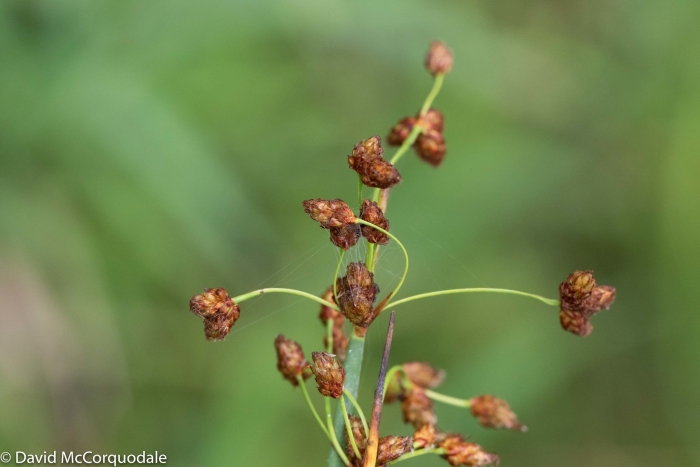Softstem Bulrush
(Schoenoplectus tabernaemontani)
Softstem Bulrush (Schoenoplectus tabernaemontani)
/
/

David McCorquodale
CC BY 4.0












































Estimated Native Range
Summary
Softstem Bulrush is valued for its ecological benefits, such as providing habitat for wildlife and stabilizing soil in wetland areas. It is also used for ornamental purposes in water gardens and landscaping, with the ’Zebrinus’ cultivar being especially popular for its striking horizontal white or yellowish stripes. The plant is edible, with new shoots and young roots consumed raw or cooked, while older roots can be processed into flour. It thrives in full sun and requires high amounts of water, tolerating a range of soil drainage conditions from fast to slow. While it is easy to maintain, care should be taken as it can be potentially invasive outside its native range, and its aggressive growth may require management in garden settings.CC BY-SA 4.0
Plant Description
- Plant Type: Grass
- Height: 1.5-9 feet
- Width: 3-6 feet
- Growth Rate: Rapid
- Flower Color: N/A
- Flowering Season: Spring
- Leaf Retention: Deciduous
Growth Requirements
- Sun: Full Sun
- Water: High
- Drainage: Fast, Medium, Slow
Common Uses
Bird Garden, Deer Resistant, Erosion Control, Low Maintenance, Water Garden
Natural Habitat
Wetlands, including marshes, swamps, and riparian areas across temperate and tropical regions worldwide
Other Names
Common Names: River Club-Rush , Soft-Stem Bulrush , Great Bulrush , Grey Club-Rush , American Great Bulrush , Common Great Bulrush , Soft-Stemmed Bulrush , Blågrøn Kogleaks , Salz-Teichsimse , Graugrüne Teichsimse
Scientific Names: Scirpus validus , Schoenoplectus tabernaemontani , Schoenoplectus validus , Scirpus tabernaemontani , Schoenoplectus lacustris subsp. glaucus , Scirpus lacustris subsp. tabernaemontani , Schoenoplectus lacustris subsp. tabernaemontani , Scirpus lacustris subsp. creber , Scirpus lacustris subsp. glaucus , Scirpus validus var. creber
GBIF Accepted Name: Schoenoplectus tabernaemontani (C.C.Gmel.) Palla